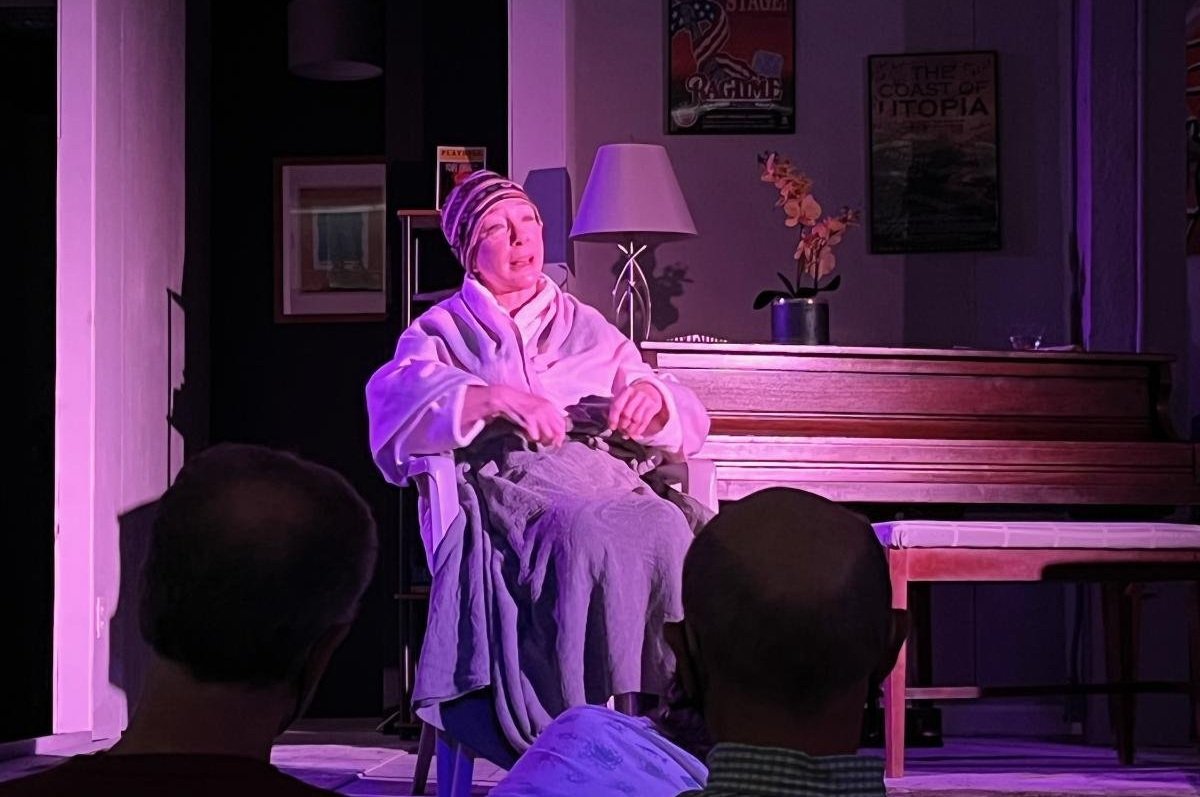ALL ABOUT BE STILL BE SILENT
When two friends tear up an autistic boy’s ticket to the most anticipated Broadway premiere of the season, what follows is a slow-burning unraveling of loyalty, complicity, and the theater world’s uneasy definition of inclusivity and accessibility.
With razor-sharp humor and moments of quietly devastating emotional truth, BE STILL BE SILENT features a circle of friends you’ll want to share drinks with…until you absolutely don’t.
Wickedly funny, unsettlingly honest, and deeply relevant, this play asks: when the curtain rises, who shouldn’t be in the room?
5 actors
1 set
Can be performed with or without an intermission
Josh Hyman, the Doorman, steals the scene with his every entrance.
“One of the most satisfying moments happened during the first weekend of Be Still Be Silent’s opening at SOOP Theatre in Pelham, NY. The parents of an autistic child approached me to tell me they appreciated how the autistic character was portrayed in both my writing and the actor who played him. They appreciated how realistic and compelling the portrayal was. and that we didn’t try to romanticize the experience of taking care of a child on the spectrum.” ~ Daniel Tobias
Sachi Parker in Be Still Be Silent
The Origin
It began with a whipping scene, a child’s scream, and a thousand people who just wanted silence.
In 2015, at Lincoln Center’s Beaumont Theater, a boy had a meltdown during the whipping scene in The King and I. As the audience grew restless and muttered complaints, the boy’s mother tried to pull him up the aisle, but he clung to the armrests, overwhelmed. The scene escalated.
From the stage, actor Kelvin Moon Loh saw everything. Backstage, he posted a heartfelt message online, not about the disruption, but about the lack of compassion in the audience. He asked theatergoers to consider what it means to be a parent caring for an autistic child in a world that too often refuses to make space for them. The support he received made his post go viral.
But I read his post and thought, “Hold on…” and fired back with a reaction of my own. I argued that a darkened theater with 1,300 people is no place for a child to scream…it’s potentially life-threatening. dangerous. . I defended the right to a distraction-free performance, especially at $250 a seat. My tone was direct, but I felt was just voicing what many New Yorkers already believed: that live theater deserves reverence.
The next morning, I woke up to a thousand strangers calling me an a**hole.
At that time, I didn’t know anyone who was autistic. I had never considered how isolating public spaces can be for families with autistic children. I had no understanding of how quickly judgment piles on, or how deeply shame is etched into their daily lives.
Then something unexpected happened: a high school friend I hadn’t heard from in decades messaged me privately. Her mother had worked in theater—she grew up in the fabric-filled hallways behind the curtain. Now she was a mother herself, raising an autistic son. She asked me to reconsider. Not to cancel myself—but to listen. My words, she said, added to the weight already pressing down on parents like her.
That message changed everything. I took down my post. I started reading: articles from a parent’s perspective as well as articles written by neurologists. I met with Kelvin Moon Loh at West Bank Café and listened to his full account of what happened that night. I took a friend’s autistic daughter to School of Rock on Broadway, just to begin to understand what it means to navigate the world with different sensory wiring. I learned the vocabulary: “stimming,” “sensory processing,” “accessibility.”
I volunteered for two years at TDF’s Autism Friendly Broadway performances (now called Relaxed Performances.) I watched a teenage boy at The Lion King rest his head on his father’s shoulder again and again to soothe his anxiety. During intermission, I talked to the Dad. Most live performances would never tolerate his son's repetitive movements. This was the first time he and his son had attended a live performance together. This brought me to tears. I began to see how many families had never experienced live theater together—until these special performances made it possible.
At the same time, I couldn’t ignore a different truth. As one theater manager told me, “The theater is a fragile bubble. Any one person in the audience has the power to kill it.” One person - true theater royalty - said the line “Nobody has right to pull focus from the stage. No one. Ever.” I understand that strong feeling too. We’ve all had moments when a ringing phone or specific behavior pulls us out of a play we’ve waited months to see.
Two truths. Both real. Both valid. That tension is where Be Still Be Silent was born.
Janet Dickinson and Terence Keyes
UPDATES:
Since the debut of “Be Still Be Silent,” the script has been revised down to 5 characters only, with an option to present the play without intermission.





